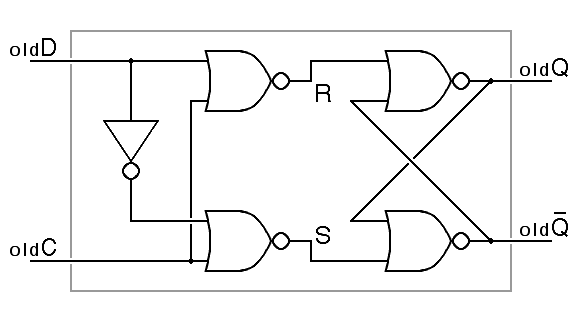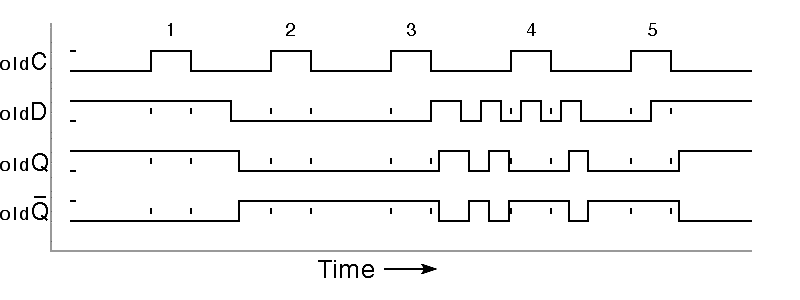The parent class, float, has two subclasses, single-float and double-float. All floating point numbers have methods FADD, FSUB. (Yes, real useful floating point numbers will have more methods, but this is a toy example). From a high-level language perspective, the statement a=b+c would be objectified as in your system as a.fadd(b,c).
a) Write an appropriate SMAL Hawk header file, float.h, that defines the interface to the parent class. This will contain some comments and a few definitions. (0.5 points)
; float.h
; a polymorphic class for representing floating point numbers
; each floating object begins with pointers to the methods that
; operate on that object, so that users need not know what kind
; of object it is after it is initialized.
; The following definitions give the displacement from the start
; of the floating object of each of the method pointers:
FADD = 0 ; the floating add routine
; expects R3 = this object, it will hold a + b
; R4 = the float object a
; R5 = the float object b
FSUB = 4 ; the floating subtract routine
; expects R3 = this object, it will hold a - b
; R4 = the float object a
; R5 = the float object b
b) Given that the variables a, b and c are local variables of the current subroutine that point to floating point objects, give code that is equivalent to a.fadd(b,c). Note that you do not know which floating point representation is involved, so you cannot directly call the floating point operation.
LEA R3,R2,A ; -- put parameter a in place
LEA R4,R2,B ; -- b
LEA R5,R2,C ; -- c
ADDI R2,R2,ARSIZE
LOAD R1,R3,FADD ; -- get pointer to method
JSRS R1,R1 ; a.fadd(b,c)
ADDI R2,R2,-ARSIZE
a) Enumerate the signed fixed point decimal equivalents of all of these (0.3 points)
First, work out the meaning of each field:
1xx = negative 0xx = positive x1x = × 20 x0x = × 2-1 xx1 = 0.5 xx1 = 0.0 From this, we can work out the 8 values
111 = - 0.5 × 20 = - 0.5 110 = - 0.0 × 20 = 0.0 101 = - 0.5 × 2-1 = - 0.25 100 = - 0.0 × 2-1 = 0.0 011 = 0.5 × 20 = 0.5 010 = 0.0 × 20 = 0.0 001 = 0.5 × 2-1 = 0.25 000 = 0.0 × 2-1 = 0.0 From this, we can conclude that this is not a very useful system!
b) What is the minimum number of bits you need in the exponent field in order to support an IEEE-style number with support for normalized floating point numbers, non-normalized numbers and NANs (IEEE-style not-a-numbers). (0.2 points)
There are 3 possibilities we are trying to distinguish: Not a number, normalized. and not normalized. It takes at least 2 bits to distinguish between 3 alternatives, so the answer must be 2.
c) Enumerate signed fixed-point decimal equivalents of all of the numbers you get in this scheme. There will be more entries in your table than in the answer for part a, but the table should not be too big to imagine writing down. (0.5 points)
First, work out the meaning of each field, just as in part a:
1xxx = negative 0xxx = positive x11x = not a number x10x = × 20 normalized x01x = × 2-1 normalized x00x = × 2-1 not normalized xxx1 = 1.5 when normalized xxx0 = 1.0 when normalized xxx1 = 0.5 when not normalized xxx0 = 0.0 when not normalized From this, we can work out the 16 values
1111 = - not a number 1110 = - not a number 1101 = - 1.5 × 20 = - 3 1100 = - 1.0 × 20 = - 2 1011 = - 1.5 × 2-1 = - 0.75 1010 = - 1.0 × 2-1 = - 0.5 1001 = - 0.5 × 2-1 = - 0.25 1000 = - 0.0 × 2-1 = - 0.0 0111 = not a number 0110 = not a number 0101 = 1.5 × 20 = 3 0100 = 1.0 × 20 = 2 0011 = 1.5 × 2-1 = 0.75 0010 = 1.0 × 2-1 = 0.5 0001 = 0.5 × 2-1 = 0.25 0000 = 0.0 × 2-1 = 0.0
a) Draw the schematic diagram that incorporates this change. Neatness counts. Label the inputs and outputs "oldD", "oldC", "oldQ", etc. in order to emphasize that the labels might not reflect the new purpose of those connections. (0.3 points)
b) Draw the timing diagram. As inputs, use the exact same sequence as shown in the timing diagram in the notes (but re-label so "C" is "oldC", etc). You are not required to give the intermediate values at the points labeled R and S in the figure, but they are certainly useful in working out the correct answer. (0.5 points)
c) Give appropriate labels for the points originally labeled old. That is, what should "oldC" be called, what should "oldD" be called, etc. These labels should reflect the function. If a Data input line exists, call it D. If it behaves as a flipflop, call the outputs Q and Qbar, and if one of those outputs can be set to the data input, call that one Q. If positive pulses on the clock input cause a data transfer, clock should be called C. If negative pulses cause data transfer, clock should be called Cbar. (0.2 points)
Old New Reason oldQ Q Still follows D when C permits oldQ Q Still the opposite of Q oldD D Still sets Q when C permits oldC C Like the old C, but active low

